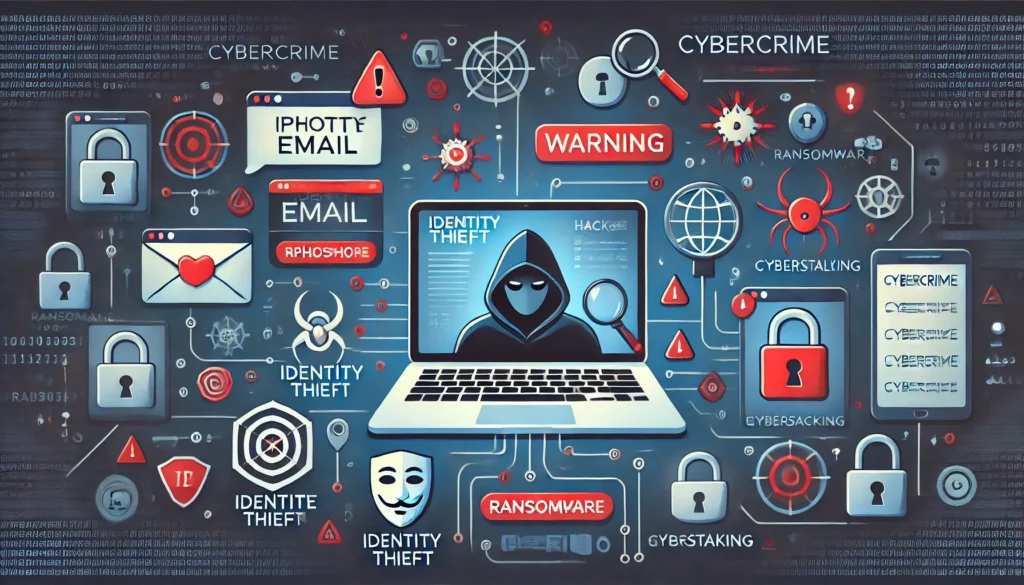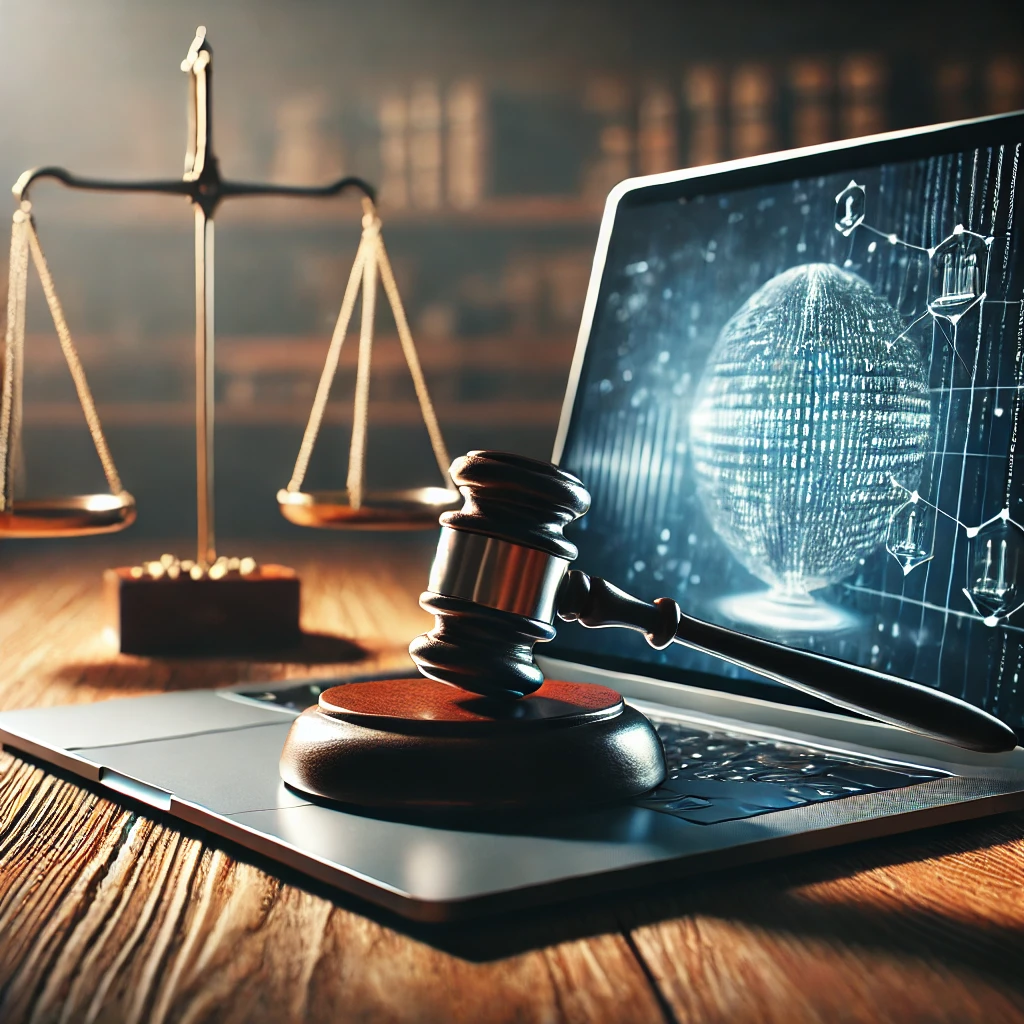The digital era has transformed the way individuals, businesses, and governments operate, offering unparalleled convenience and connectivity. However, this rapid technological advancement has also paved the way for cybercrime, a growing menace with far-reaching consequences. This article delves into the complexities of cybercrime, its various forms, and the evolving legal frameworks designed to combat it.
Understanding Cybercrime
Cybercrime refers to criminal activities carried out using computers or the internet. Unlike traditional crimes, cybercrime transcends geographical boundaries and can target victims across the globe in real time. It ranges from minor offenses like phishing emails to significant crimes such as ransomware attacks on critical infrastructure.
Types of Cybercrime

- Hacking: Unauthorized access to computer systems or networks to steal, modify, or destroy data.
- Phishing: Fraudulent attempts to obtain sensitive information such as passwords and credit card numbers by masquerading as a trustworthy entity.
- Ransomware Attacks: Malicious software encrypts the victim’s data, demanding a ransom for decryption.
- Identity Theft: Stealing personal information to impersonate someone else for fraudulent activities.
- Cyberstalking: Using digital platforms to harass or intimidate individuals.
- Child Exploitation: Distribution and possession of child pornography or using the internet to lure minors.
- Corporate Espionage: Unauthorized access to proprietary information for competitive advantage.
Impact of Cybercrime
The effects of cybercrime are multifaceted, impacting individuals, organizations, and governments:
- Economic Impact: Cybercrime costs the global economy billions of dollars annually through theft of intellectual property, financial fraud, and recovery expenses.
- Reputational Damage: Organizations suffer loss of trust from customers and stakeholders following a breach.
- Emotional Distress: Victims of cyberstalking, identity theft, or fraud often experience psychological trauma.
- National Security Threats: State-sponsored cyberattacks can compromise critical infrastructure, including energy grids, transportation systems, and defense networks.
Legal Responses to Cybercrime
The fight against cybercrime requires robust legal frameworks that adapt to evolving threats. Nations worldwide are enacting laws and participating in international collaborations to address this challenge.
National Legal Frameworks
- United States: The Computer Fraud and Abuse Act (CFAA) criminalizes unauthorized access to computer systems, while the Electronic Communications Privacy Act (ECPA) governs data privacy.
- European Union: The General Data Protection Regulation (GDPR) emphasizes data protection, and the EU Cybersecurity Act strengthens member states’ cybersecurity capacities.
- India: The Information Technology Act, 2000, addresses various cyber offenses, including hacking and identity theft.
- China: The Cybersecurity Law of the People’s Republic of China mandates data localization and government oversight of critical information infrastructure.
International Treaties and Agreements
- Budapest Convention on Cybercrime: The first international treaty seeking to harmonize national laws, improve investigative techniques, and foster international cooperation.
- UN Resolutions: The United Nations promotes global cybersecurity through its resolutions and encourages member states to develop domestic legislation.
- Interpol’s Role: Interpol provides a platform for international collaboration, facilitating intelligence sharing and joint operations.
Challenges in Combating Cybercrime

- Jurisdictional Issues: Cybercrimes often involve perpetrators, victims, and servers located in different countries, complicating legal proceedings.
- Rapid Technological Changes: Legal systems struggle to keep pace with the rapid evolution of cyber threats.
- Lack of Resources: Many law enforcement agencies lack the technical expertise and funding required to investigate complex cybercrimes.
- Privacy Concerns: Balancing cybersecurity with individuals’ right to privacy poses significant challenges.
- Dark Web Activities: The anonymity of the dark web makes it a hub for illegal activities, from drug trafficking to cybercrime-for-hire services.
Strategies for Effective Legal Responses
- Public Awareness Campaigns: Educating individuals and businesses about cybersecurity practices can reduce vulnerabilities.
- Capacity Building: Training law enforcement and judicial officers in cyber forensics and legal frameworks.
- International Collaboration: Strengthening cross-border partnerships to ensure perpetrators are brought to justice.
- Legislative Updates: Continuously updating laws to address emerging threats like AI-enabled cybercrimes.
- Use of Technology: Leveraging AI and machine learning to predict, prevent, and investigate cybercrimes.
Case Studies of Legal Responses
- WannaCry Ransomware Attack (2017): The attack affected over 200,000 computers globally. Collaborative efforts between law enforcement agencies and tech companies led to mitigation and increased awareness of ransomware.
- Yahoo Data Breach (2013-2014): The breach exposed data from over 3 billion accounts. Legal actions included hefty fines and settlements, underscoring the importance of corporate responsibility in cybersecurity.
Future Trends in Cybercrime and Legal Responses
- AI and Automation: Cybercriminals are increasingly using AI to develop sophisticated attacks, necessitating advanced legal and technical countermeasures.
- Blockchain Security: While blockchain technology offers robust security, its misuse in activities like money laundering requires targeted regulations.
- Cybercrime-as-a-Service: The availability of hacking tools and services for purchase will drive demand for stricter laws and international policing efforts.
- Quantum Computing: As quantum computing becomes mainstream, it will challenge current encryption standards, requiring a legal and technological overhaul.
Conclusion
Cybercrime is a dynamic and evolving challenge that requires a multifaceted response. By fostering international collaboration, updating legal frameworks, and investing in education and technology, societies can mitigate the risks associated with cybercrime. The journey toward a secure digital future depends on collective action and an unwavering commitment to justice and innovation.
